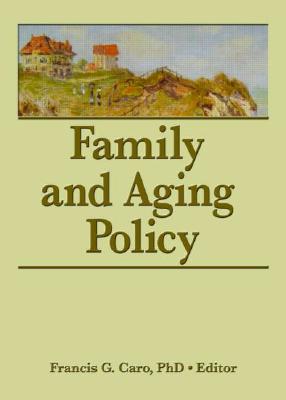Family and Aging Policy examines how public initiatives to assist the elderly in the United States, Canada, Singapore, Denmark, and Sweden can impact families who provide them with long-term care. For the majority of older people, the aging experience involves their families directly and indirectly, affecting income security, housing, and health care. This unique book addresses the issues that matter most, including how families juggle jobs and care giving, how families and formal services can share responsibilities, the effects of the Family and Medical Leave Act, consumer-directed service options, and provisions for caregiver support in each of the 50 United States and the District of Columbia.
Learn how public policies can help families provide the care their elderly relatives need
Family and Aging Policy examines how public initiatives to assist the elderly in the United States, Canada, Singapore, Denmark, and Sweden can impact families who provide them with long-term care. For the majority of older people, the aging experience involves their families directly and indirectly, affecting income security, housing, and health care. This unique book addresses the aging issues that matter most to families struggling to deal with the demands of care giving and provides answers on how the public sector can help.
As the traditional nuclear family becomes a memory and the notion of extended family disappears, the need for public interventions to help the elderly increases. A significant number of people grow old without families they can depend on. Others have families who want to help, but lack the financial means or the housing needed to provide care. Family and Aging Policy offers options on how families and formal services can share responsibilities, including how families can juggle jobs and care giving, the effects of the Family and Medical Leave Act, consumer-directed service options, community-based care programs, accessory dwelling units and zoning ordinances, and provisions for caregiver support in each of the 50 United States and the District of Columbia.
Family and Aging Policy examines:
- extensive welfare programs in Sweden
- publicly funded home care programs in Denmark
- family-oriented social policies in Singapore
- shared responsibilities of families and formal services in Canada
- the Administration on Aging’s National Family Caregiver Support program in the United States
- California Caregiver Resource Centers
- and much more!
Family and Aging Policy is an invaluable tool for researchers and policy analysts working in family policy issues and as an essential supplemental text for course work in gerontology, sociology, family relations, and social work.
Get Family and Aging Policy by at the best price and quality guranteed only at Werezi Africa largest book ecommerce store. The book was published by Taylor & Francis Inc and it has pages. Enjoy Shopping Best Offers & Deals on books Online from Werezi - Receive at your doorstep - Fast Delivery - Secure mode of Payment
 Jacket, Women
Jacket, Women
 Woolend Jacket
Woolend Jacket
 Western denim
Western denim
 Mini Dresss
Mini Dresss
 Jacket, Women
Jacket, Women
 Woolend Jacket
Woolend Jacket
 Western denim
Western denim
 Mini Dresss
Mini Dresss
 Jacket, Women
Jacket, Women
 Woolend Jacket
Woolend Jacket
 Western denim
Western denim
 Mini Dresss
Mini Dresss
 Jacket, Women
Jacket, Women
 Woolend Jacket
Woolend Jacket
 Western denim
Western denim
 Mini Dresss
Mini Dresss
 Jacket, Women
Jacket, Women
 Woolend Jacket
Woolend Jacket
 Western denim
Western denim
 Mini Dresss
Mini Dresss






























































